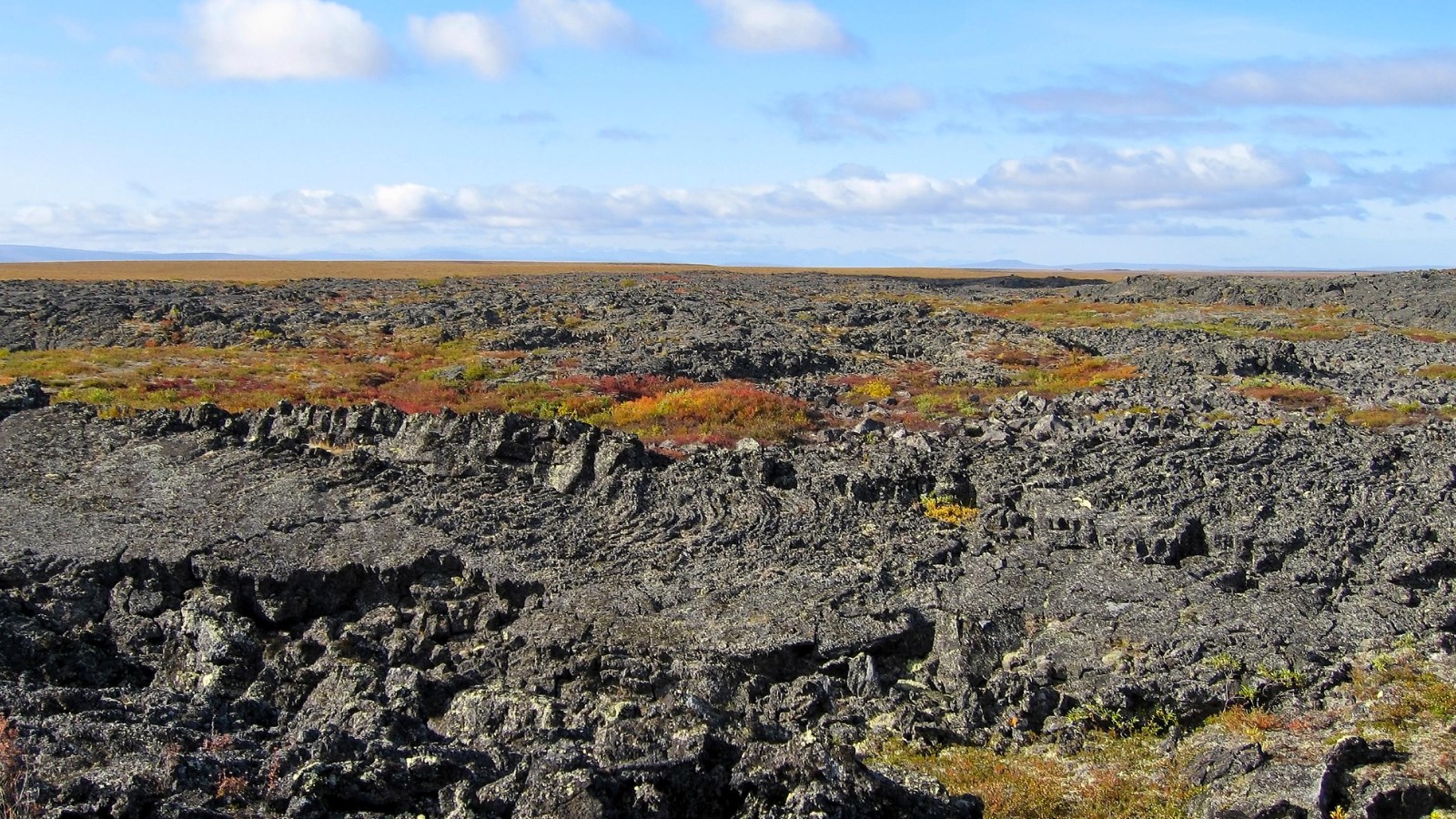Last updated: January 15, 2021
Place
Imuruk Lava Fields

NPS Photo
Quick Facts
Location:
65.4886N, 163.2969W
Amenities
1 listed
Scenic View/Photo Spot
“Volcanoes are accidents of nature”, a famous early twentieth century geologist named William Morris Davis once wrongly proclaimed. Today, scientists know that volcanic eruptions involve a bewildering range of behavior and eruptive styles, resulting in numerous landforms that are all called volcanoes.
The Imuruk Lava Fields are the result of volcanic eruptions from about 75 vents or openings in the earth’s surface. Covering more than 100,000 acres, the lava fields provide an opportunity to watch vegetation recapture a landscape that has been totally devastated by harsh natural processes. Like a layered cake, the various flows and volcanoes that erupted in the Imuruk Lava Field overlap one another with the youngest flow (the top layer) dating to 1-2 thousand years ago and the oldest lava flow (the base layer) dating to 26-28 million years ago.
The largest vent in the Imuruk Lava Field is the Lost Jim lava cone, formed less than 2,000 years ago. Named for a U.S. Geological Survey researcher who got separated from his group while mapping the area in 1947, the Lost Jim Lava flow is characterized by smooth, twisted ropy folds of pahoehoe lava. Pahoehoe lava is formed when the top layer of a lava flow cools and hardens while the bottom continues to flow, forming a ground cover of swirling, folded patterns. The Lost Jim Lava flow begins at the base of the Lost Jim cone and extends 12 miles westward, covering approximately 88 square miles.
Despite its harsh past, these basalt fields are now home to many burrowing rodents, insects, lichens, mosses, and dozens of species of vascular plants. Caribou are known to frequent the area to eat the lichens. As you hike across this region, you will find yourself traversing a gently rolling landscape of broadly domed summits and volcanic cones. You may even find small lava tubes and caverns carved out by the volatile liquids and gases that created the ground you are standing on, but do not enter these spaces, as the rock is unstable and highly hazardous.
The Imuruk Lava Fields are the result of volcanic eruptions from about 75 vents or openings in the earth’s surface. Covering more than 100,000 acres, the lava fields provide an opportunity to watch vegetation recapture a landscape that has been totally devastated by harsh natural processes. Like a layered cake, the various flows and volcanoes that erupted in the Imuruk Lava Field overlap one another with the youngest flow (the top layer) dating to 1-2 thousand years ago and the oldest lava flow (the base layer) dating to 26-28 million years ago.
The largest vent in the Imuruk Lava Field is the Lost Jim lava cone, formed less than 2,000 years ago. Named for a U.S. Geological Survey researcher who got separated from his group while mapping the area in 1947, the Lost Jim Lava flow is characterized by smooth, twisted ropy folds of pahoehoe lava. Pahoehoe lava is formed when the top layer of a lava flow cools and hardens while the bottom continues to flow, forming a ground cover of swirling, folded patterns. The Lost Jim Lava flow begins at the base of the Lost Jim cone and extends 12 miles westward, covering approximately 88 square miles.
Despite its harsh past, these basalt fields are now home to many burrowing rodents, insects, lichens, mosses, and dozens of species of vascular plants. Caribou are known to frequent the area to eat the lichens. As you hike across this region, you will find yourself traversing a gently rolling landscape of broadly domed summits and volcanic cones. You may even find small lava tubes and caverns carved out by the volatile liquids and gases that created the ground you are standing on, but do not enter these spaces, as the rock is unstable and highly hazardous.
